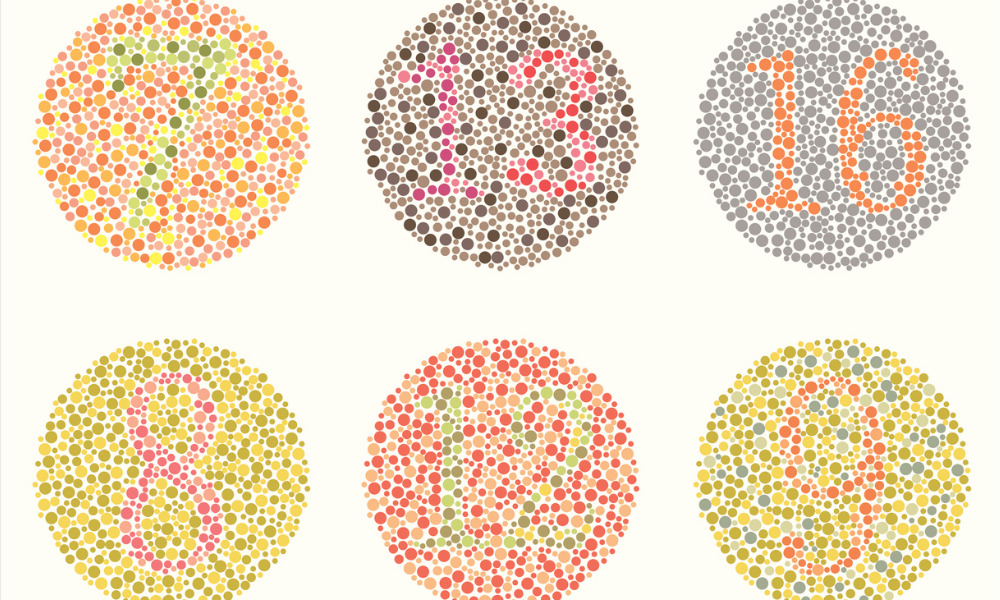Can you be a safety officer if you are colour blind?

It is estimated that around 2.6 million Canadians suffer from “colour blindness”.
The Canadian Association of Optometrists (CAO) says that the term “colour blind” is actually used incorrectly as only a very small percentage of people are completely unable to identify any colour (also known as achromatopsia). This is why it is more accurate to refer use the term “colour deficiency.”
Mostly men tend to be colour deficient, due to a missing or mutated gene on their X chromosome. The CAO estimates that around 1 in 10 men have colour deficiency. It is frequently an inherited condition.
There are three types of colour deficiency, explains the CAO on their website. Two different kinds of red-green deficiency, and one blue-yellow deficiency. The CAO says that red-green is the most common, is usually inherited, and leads to the “inability to distinguish between certain shades of reds, browns, pinks and oranges, or greens and blues.” Blue-yellow is more rare, and usually comes from damage to the optic nerve.
The CAO says that people with “complete colour blindness see objects in shades of black, white and grey.”
Does colour blindness or deficiency affect jobs?
There is no current cure, and being colour blind or colour deficient can seriously impact your career prospects. For example, depending on the severity of the condition, those who are colour deficient or colour blind may not become pilots (though contrary to popular belief it is not all or nothing).
A recent study by EnChroma (creators of glasses for colour blindness) revealed that nine our of 10 people with colour vision deficiency (CVD) said that identifying colours correctly plays a role in their job. 75 per cent of those surveyed said that being colour blind slows them down at work, and 65 per cent have trouble interpreting colour-coded materials.
What jobs are color blind people not allowed to do?
There are certain professions which may restrict access due to the importance of being able to interpret colour-coded materials. These include – as mentioned before – aviation, the armed services, railway drivers, pharmacists and of course those professions where seeing colour is essential such as photography, fine art and workers in paint, paper and textile manufacture.
But because colour deficiency is a spectrum, in situations where the condition is mild and manageable, restrictions may be eased or accommodations provided.
How color blindness can affect safety officers
When it comes to health and safety, there may be some aspects of the job that could be difficult for those who suffer from colour blindness or colour deficiency. For example, specific signage or warnings could be misread. In addition, being able to correctly identify colours could come in helpful when looking out for potential dangers or injuries. This can be an issue for both workers and safety officers.
Can you become a safety officer if you are color blind?
Nevertheless, in Canada there is nothing outright stating that you cannot be a safety officer if you are colour blind. In the U.S. there is no requirement – the Occupational Health and Safety Administration (OSHA) does not have any standards which require normal colour vision for any occupation (though each occupation may have additional rules).





